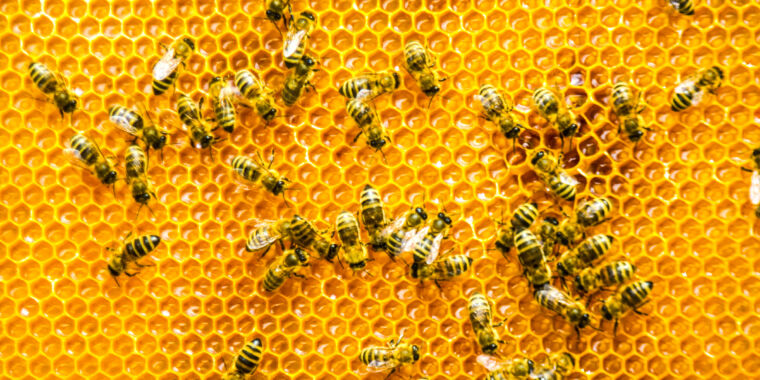
In addition, nests need two different-sized honeycombs, as they use distinct sizes for workers (most of the nest) and drones (males used for reproduction).
Finally, honeycombs are often built as multiple units, starting from different areas of the hive and ultimately meeting in the middle somewhere.
But prior to the onset of building cells for drones, the workers would start constructing slightly larger cells, allowing for a smooth transition in size.
Managing the merger of different honeycombs was substantially more challenging.A major reason that these odd-sided cells were necessary is that the bees will start building at different sites by making honeycombs with different orientations.Thus, as these different segments grow to meet each other, their hexagonal arrays will be oriented with incompatible angles.
But bees manage to see the problem coming, and they start twisting the hexagons before the different honeycombs meet."The bees effectively 'roll' the hexagonal cells into the gap when merging combs," they wrote."If the tilt difference is small, these rolling cells can maintain their hexagonal shape, but when the tilt difference is large, the bees use nonhexagonal shapes to merge the combs." And remember, all of that is layered on top of the complexity of managing two different sizes of cells.
